Alan Paul's Blog, page 40
November 19, 2013
Crossroads 2013
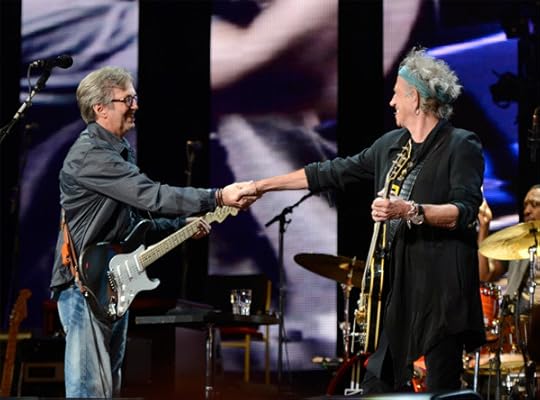
Clapton and Richards at Crossroads.
In honor of the November 19 release of Crossroads Guitar Festival 2013 on Blu-ray and DVD, I present my report from the two-day festival. The story originally appeared in Guitar World.
***
Eric Clapton spent a lot of time on stage at his two–night, 10-hour Crosroads Guitar Festival, held April 12-13 in Madison Square Garden. He opened the event with a five-song acoustic set on Friday and closed out Saturday with his band. In between, the host often became a most welcome guest. Strat in hand, Clapton traded licks with a wide range of the performers he had personally selected to be there. He also spent a lot of time smiling.
Slowhand smiled sitting next to B.B. King, Jimmie Vaughan and Robert Cray for “Every Day I Have the Blues “ as Vaughan ripped off a twisted, solo filled with jump blues feints and Chuck Berry jabs, and B.B. surprised everyone including the acolytes by his side as he played counterpoint, digging out some tasty new licks. Clapton smiled when he joined Los Lobos for a rip through their “Tin Can Trust.” He dug in deep for a couple of twisty, swing jazz tunes with guitarist Kurt Rosenwinkel. He probably smiled widest when he joined the Allman Brothers Band for Derek and the Dominos’ “Why Does Love Got To Be So Sad.” The song ended with a long coda featuring Clapton and Derek Trucks weaving guitar nirvana, a moment made all the more special by the fact that Trucks was playing the very guitar Duane Allman had used on the original recording – his 1957 goldtop Les Paul.
“Eric likes having different people around to challenge and inspire him and I think that’s the first criteria of who he invites to Crossroads,” says Trucks.
This was the fourth Crossroads Festival, which have settled into an every-three year pattern. The events are fundraisers for the Crossroads Centre, a drug and alcohol rehab facility Clapton founded in Antigua in 1997. The first was in Dallas in 2004; the last two events were day-long festivals in a Chicago stadium.
There was nary a letdown throughout the two nights, though Clapton’s decision to have guests Robbie Robertson and Keith Richards each sing two songs with his group was odd. Richards electrified the crowd with his appearance and did a great job on “Key to the Highway,” but he charm faded a bit on Chuck Berry’s “Sweet Little Rock ‘N Roller.” As a singer, Robertson is a great guitarist, though he did manage a moving “I Shall Be Released,” dedicated to his deceased Band-mates.
Earlier, Jeff Beck led his group, which featured a violinist and bassist Tal Wilkenfeld, through a set of instrumental music before being joined by belter Beth Hart for a pair of songs, including “I Ain’t Superstitious,” which he recorded on his 1968 solo debut Truth. Buddy Guy was his magnetically manic self, joined by his 14-year-old prodigy Quinn Sullivan and pedal steel ace Robert Randolph. Country star Keith Urban lit up John Mayer’s excellent set on Friday and joined Vince Gill and Albert Lee Saturday for some super hot country picking. Urban played the Beatles’ “Don’t Let Me Down” with Mayer and the Stones’ “Tumbling Dice” with Gill.
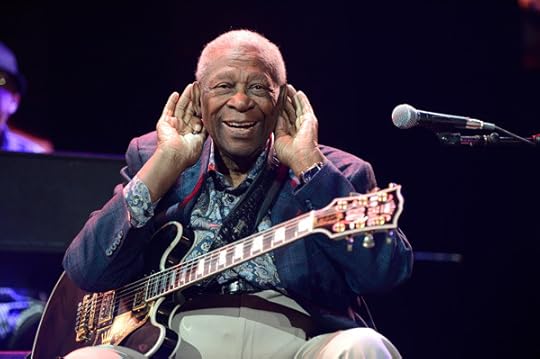
B.B. at Crossroads feeling the love of the crowd.
“I’m a sucker for the old guard and it really great seeing Jimmie Vaughan, B.B, Eric, and Robert Cray,” says Trucks. “I thought it was really conversational and B.B. played some stuff I hadn’t heard him do; he dug deeper than he does on an average night.”
Vince Gill said he especially enjoyed Trucks sit in with Sonny Landreth, a meeting of slide masters. “Each of them combines technique and emotion in a really unusual and remarkable way,” Gill says.
Haynes loved watching Beck, Clapton, Los Lobos and jazz guitarist Allan Holdsworth – “a guy so many of us guitarists have been inspired by” — and having Taj Mahal sit in with the Allman Brothers for “Statesboro Blues.” Taj’s 1968 version of the blues classic was the Duane Allman’s inspiration not only to learn the song, but to teach himself slide guitar. Crossroads’ finest moments revolve around such collaborations, and the simple fact that everyone plays better in the company of other standard bearers.
“Whipping Post” from Crossroads 2013:
With so many great guitarists marching on and off the stage, the most memorable performances came from those who could harness the energy of the event and dig into deeply emotional moments. Doyle Bramhall 2 channeled Albert King with Clapton and was riveting in his own set, which reached a fever pitch when singer Alice Smith sang the powerful emotive blues ballad “Cry.” His whole set was a searing psychedelic blues fest; his band was also joined by Citizen Cope and Gary Clark Jr., who appeared repeatedly, fronting his own band and playing a hard-driving solo set.
Clark burst into the public eye with this appearance at the 2010 Crossroads. This year’s surprise performers included jazz cat Rosenwinkel, who had Clapton join him for two songs and also backed Holdsworth for an intense, hard-driving “Gamma Band.” It took the guitarists a few minutes to find their way with each other before they turned the inward track inside out.

Derek Trucks with Duane’s 57 Goldtop, Warren Haynes, Eric Clapton.
Haynes and Trucks appeared with the Allman Brothers for their intense, set-closing Friday performance and returned Saturday for a three-song acoustic set with Gregg Allman, who mesmerized the arena with “Midnight Rider.” The acoustic sets on small side stages allowed the main stage to be turned over in between acts and provided a number of highlights, including: Guy proudly singing about being “76 years young”; Bramhall and John Mayer playing Stevie Ray Vaughan’s “Change It” (written by Bramhall’s father Doyle) on 12 strings; Taj Mahal and Keb Mo unleashing foot-stomping blues on a pair of steel guitars, and Blake Mills – another of this year’s under-the-radar performers – who played one song then was joined by Trucks for the 50s hit “Save the Last Dance for Me.”
“A friend was supposed to play that with me and couldn’t do it at the last minute,” Mills recalls. “I was kind of distraught and then I realized that 20 of the best guitarists in the world were down the hall. I had the nerve to ask Eric to play it with me and he considered it before suggesting Derek, who is one of my favorite players. That was a thrill – especially since the first song I played was an original that just bombed. As soon as I started playing, it was like I was in that horrible dream where you’re on stage at Madison Square Garden and realize you’re only wearing a towel. The whole experience was a dream with a little bit of nightmare thrown in. It was nice to have the cavalry coming.”
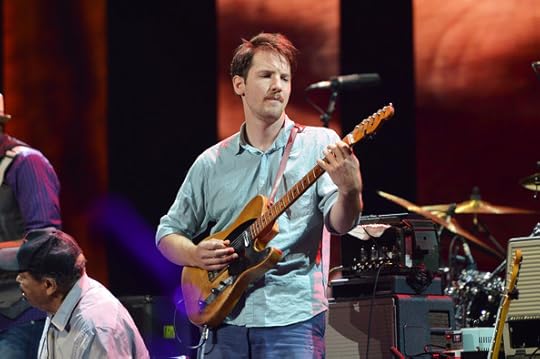
Blake Mills
Mills was invited to the festival when Clapton heard his playing on a Natalie Manes song on Grey’s Anatomy. “I played slide on the end and Eric liked it and called Derek to see if it was him – which was a compliment enough,” Mills recalls. Clapton made some inquiries, found out Mills was the guitarist and sent the 26-year old guitarist a letter of invite. He was in the club.
Vince Gill, the country super picker who has played at all four Crossroads Festivals, remembers when he got invited the first time.
“Eric called and said, ‘Hello, this is Eric Clapton and I’ve got a question.’ I said, ‘Whatever the question, the answer is yes,’” Gill says. “This is the call you want to get. This is where you want to be.”
// ]]>
Amazon.com Widgets
November 18, 2013
Len Bias, 1963-1986
 I just realized that Len Bias should have celebrated his 50th birthday today, November 18, 2013. This made me so sad, and it made me pause and reflect about his loss and remember what a terrific basketball player he was, and how much fun he was to watch.
I just realized that Len Bias should have celebrated his 50th birthday today, November 18, 2013. This made me so sad, and it made me pause and reflect about his loss and remember what a terrific basketball player he was, and how much fun he was to watch.
I wrote this remembrance of Len for Slam in 2000. I forgot that I spoke to Red Auerbach, Dean Smith and Jerry Tarkanian among others for this – but not Left Driesell. I wish I could explain why, but I simply don’t recall. Rest in peace, Len, and everyone who knew the man.
• • •
The headline stared at me through the plastic front of the newspaper box in cold, black type, and I read it over and over, literally unable to believe my eyes. I was on a remote island in Lake Michigan. No TV. No phone. No contact with the outside world except this Detroit Free Press box by the ferry dock, and it was sending a message I simply could not comprehend.
“Basketball Star Len Bias Dead of Heart Attack.”
Dead at age 22. Dead just months after he captured the nation’s imagination with a remarkable display of dominance in a University of Maryland March Madness loss to UNLV. Dead just two days after being selected second in the 86 Draft by the Celtics. Dead of a massive heart attack brought about by using cocaine. It seemed impossible on June 20, 1986, and it still does today.
Len Bias opened many peoples’ eyes to cold, hard reality, but he paid an awful price for doing so. He paid way too much. He paid everything he had, and for this we owe him something. We owe him our continued respect, our undying love for his pure-hearted game, and a tiny piece of our brains dedicated to recalling his brilliance. Because make no mistake, he was brilliant. If you never got to see Len Bias play, you missed something truly wonderful.
*
Red Auerbach couldn’t believe his luck. Coming off his 16th NBA title, the Celtics’ legendarily crafty team president had the second pick in the 86 draft courtesy of the Sonics, who had guard Gerald Henderson to show for it. As if that wasn’t enough, the Cavs selected North Carolina center Brad Daugherty with the first pick. That meant only one thing: Len Bias was all Red’s. The implications were staggering. Bias would join Larry Bird, Robert Parish and Kevin McHale on one of the greatest frontline in league history and the Celtics’ dynasty would be refueled, reconstructed and re-energized, primed to extend its dominance for another decade.
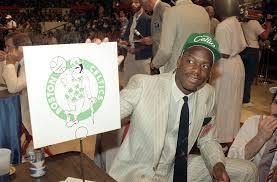 “If Len was available, we were taking him, no question,” says Auerbach. “He was our guy. He was going to be a perennial All Star. He had it all. He could shoot it, he could run, he could rebound, he could defend. He was big. And he loved the game and played with passion. The only question was if he would play power forward or quick forward.”
“If Len was available, we were taking him, no question,” says Auerbach. “He was our guy. He was going to be a perennial All Star. He had it all. He could shoot it, he could run, he could rebound, he could defend. He was big. And he loved the game and played with passion. The only question was if he would play power forward or quick forward.”
This was a question merely because he was both quick enough and strong enough to play either at a very high level. In four years at the University of Maryland, the skinny, athletic guy from nearby Landover had blossomed into a chiseled, 6-8 205-pound scoring machine. He slowly built his game up to a level where he dominated college ball the same way he had ruled in high school, when he as named MVP of the McDonald’s All Star game his senior year.
Bias averaged 23.2 ppg and 7 rpg his final season to lead the ACC in scoring for the second consecutive year; good enough to be named conference player of the year. The scoring capped his steady annual improvement, from 7.2 to 15.3 to 18.9 over the previous three seasons. His coach, Lefty Driesell, called him “the greatest basketball player that ever played in the Atlantic Coast Conference.” Lefty’s hyperbole is the stuff of legend, but it’s not an absurd claim, even considering that the ACC was the collegiate home to David Thompson, Bob McAdoo, John Lucas, Michael Jordan and many other luminaries.
“He was a sensational college basketball player his senior year,” says Dean Smith, who retired from North Carolina in 1997 as the winningest coach in NCAA history. “He was heavily recruited, so his success wasn’t a shock, and he was always dangerous and always possessed all the skills. But his confidence skyrocketed in his final season and that’s what elevated him.”
Unlike Smith, who saw him twice a year for four years, former UNLV coach Jerry Tarkanian only coached against Bias once, but he saw a sensational performance in what turned out to be the forward’s final game ever. Len scored 19 of Maryland’s final 21 points. This was enough to capture a nation’s attention, and to make a serious believer out of Tarkanian.
“Len Bias was absolutely a phenomenal player, right up there with the best I’ve ever coached against,” says Tark. “He was a great, great player, and he was going to be absolutely fabulous in the NBA.”
“He was definitely going to be an All Star,” adds Auerbach. “Beyond that, who knows? It’s impossible to predict who will rise to be among the very few very special players like Larry Bird, Magic Johnson or Michael Jordan. But I don’t know what could have kept him from being an All Star.”
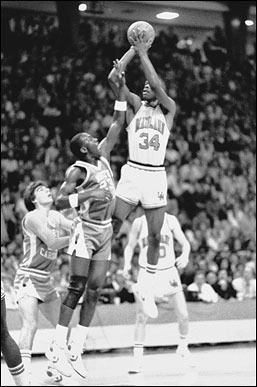 What made Bias unique was his multi-faceted game. As Auerbach said, he almost certainly could have been an All Star at either the 3 or the 4. Most power forwards would have been blinded by his quickness, while small forwards would have been overwhelmed by his strength. And as strong as he was, he was sure to have packed on 10 or 20 pounds of muscle onto his still-thin frame in coming years.
What made Bias unique was his multi-faceted game. As Auerbach said, he almost certainly could have been an All Star at either the 3 or the 4. Most power forwards would have been blinded by his quickness, while small forwards would have been overwhelmed by his strength. And as strong as he was, he was sure to have packed on 10 or 20 pounds of muscle onto his still-thin frame in coming years.
“He was a prototypical forward,” says Turner Sports analyst Kenny Smith, who played against Bias while at UNC. “He could really work that baseline. He was tremendously athletic, but what made him a rarity is he did not depend on his athleticism the way most guys of his caliber do. He was one of the first guys to say, ‘I can shoot from the outside and I’m athletic, so I can also take off down the lane and sky over your head for a jam. I can do whatever I want.’”
“His game definitely had more than sheer athleticism to it,” agrees Dean Smith. “He had a great crossover to get a jump shot and had a lot of skillful moves in the paint. It’s generally a misnomer to say any great player relies on raw skill, and that was certainly the case with him.”
The Smiths Kenny and Dean have good cause to so thoroughly recall Bias’s brilliance, for it was never on display so vividly as it was on February 20, 1986. On that day, he led his Terps to a stunning upset over the Smiths’ number-one ranked North Carolina Tar Heels in a game which is a pillar of his legendary status, now regularly featured on ESPN Classic.
Maryland arrived at Chapel Hill’s newly opened Dean Dome with a mediocre record of 13-11, just 3-7 in the ACC. UNC was 25-1, led by Daugherty, Smith, the sixth pick in the 87 draft, and Joe Wolf, who was also to be a first-round pick. Bias kept the Terps close in the first half with 17 points, including the final six, which trimmed UNC’s 11–point lead to five. He threw down a two-handed power slam, sank two free throws after drawing a foul with a picture-perfect pump fake, then swished a short baseline jumper, highlighting his ability to pick his poison.
The game intensified in the second half and Bias made several spectacular plays, including a gorgeous reverse layup improvised after driving the left baseline and finding his path blocked by the 6-11 Wolf. Still, Carolina led by nine with just under three minutes remaining before Bias swished a 20-foot jumper. Then, rather than retreating upcourt, he darted towards the hoop, cut in front of Smith, intercepted the inbounds pass and powered home a reverse jam over stunned center Warren Martin. It was a remarkable play executed on instinct in the blink of an eye, incredible enough that the game is now filed away in ESPN Classic’s archives under “The Sequence.”
“It was a great play,” Kenny Smith recalls. “He stole a pass out of nowhere and dunked it backward on a 7-2 guy with long arms. It was so memorable that I often talk to people who remember it as a buzzer-beating game winner, though there were actually about three minutes left.”
Bias had cut the lead by four in the blink of an eye and decidedly shifted momentum Maryland’s way. With 58 seconds left, he nailed another 20-footer from the top of the key to make the score 69-67. With UNC gobbling up the clock, Smith was fouled with 10 seconds left, and the usually reliable pg bricked the front end of a one and one, giving Maryland a chance to tie.
With Bias covered on the baseline, teammate Jeff Baxter knocked down a jumper to send the game into overtime. Bias only scored one hoop in the extra period, but it was huge, a tough jumper in the lane while double teamed to put Maryland up for good, 73-72, just when it seemed likely that UNC was going to run away. Then, with 15 seconds left and his team clinging to a one-point lead, he swatted away Smith’s shot to preserve the victory and help hand Carolina its first Dean Dome defeat.
“That game was the best I ever saw him play and it was certainly one of the greatest performances against one of my teams,” says Dean Smith.
Adds Kenny Smith, “That game solidified him as being the best player in college basketball, because he wasn’t doing it against just anyone, but against the best, on the biggest stage. He made us believe. Before we were like, ‘Len Bias, whatever, but we’re North Carolina.’ But he showed us by taking it to us in our own building.”
After the game, Terps pg Keith Gatlin said, “God was with us tonight, and God was Lenny Bias.” In the next day’s paper, Washington Post columnist Thomas Boswell wrote, “The NBA shouldn’t wait to draft this guy. It should put guards around him until he can start filling up NBA arenas.”
It’s an idea which Auerbach surely would have endorsed. Bias’ athleticism would have been welcome on the Celtics, as it was the very quality the team lacked. Their 86 championship squad relied on savvy and muscle rather than speed or quickness, and their big three was growing somewhat rickety, while top frontcourt reserve Bill Walton was teetering on his terminally bum feet.
“The Celtics’ weakness was a lack of athleticism and Len Bias was going to solve that problem,” says Bob Ryan, longtime Celtics reporter for The Boston Globe. “He was going to be the Celtics’ answer to James Worthy [then the Lakers’ star forward].”
Jerry Tarkanian agrees with this comparison, but actually takes Ryan’s point a step further by saying Bias was actually a better player than Worthy. “He didn’t run the floor as well, but he was stronger and more multi-faceted,” says Tark. “He was tremendous.”
While virtually everyone who watched Bias play his senior year agrees that he would have thrived in the NBA under virtually any circumstances, it’s hard to imagine a sweeter scenario for a rookie forward than serving as a key reserve to Bird, Parish and McHale.
“It would have been easy for Len to blossom in the NBA because the burden wouldn’t have been placed on him the way it generally is on such a high pick,” says Kenny Smith. “Anything that he did would have been a bonus, and it’s incredible to have a guy with that much talent as a bonus player. He would have learned a lot from Bird, McHale and Parish and, just as importantly, he would not have entered a losing situation and learned bad habits. He would have had winning habits from the start.”
Bias himself was elated to have landed on the Celtics. “I think I could get accustomed to winning,” he said with a smile after the draft. “To be able to play for Boston …[is] a dream within a dream.”
The feeling was mutual, with the Celtics and their followers convinced Bias would be the next great Boston bball hero.
“Landing Len Bias on the heels of a championship was the apex of the franchise’s run of incredible good luck and great success,” says Ryan. “He was going to help them transition from one great era to another. He would have served as the fourth frontcourt player for a year or two by which time he would have been an All Star and they would start building around him and be able to trade either McHale or Parish for more great, young players. That was the plan.”
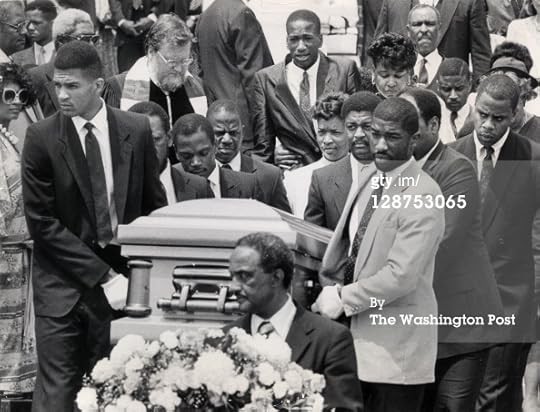 It was a plan that was, of course, thoroughly and completely scuttled. Seemingly on the cusp of another decade of dominance, they haven’t so much as sniffed a title in 14 years. The death of Bias, then Reggie Lewis, their first pick in 87, represented the start of a horrible string of bad luck to match the Celtics’ many decades of good fortune.
It was a plan that was, of course, thoroughly and completely scuttled. Seemingly on the cusp of another decade of dominance, they haven’t so much as sniffed a title in 14 years. The death of Bias, then Reggie Lewis, their first pick in 87, represented the start of a horrible string of bad luck to match the Celtics’ many decades of good fortune.
The fact that drugs were involved in Bias’ death added to most people’s incomprehension. He was an extremely well-liked guy, considered something of a model citizen – a magnetic figure with a 1000-watt smile who was family-oriented, religious and hard working.
“I knew Len well and he was an absolutely super kid,” says Auerbach. “I watched some Maryland practices and had dinner with him a few times and I genuinely liked him a lot.”
So it was that when the state medical examiner confirmed rumors five days after Bias’ death by saying that the player had died of “cocaine intoxication,” the shockwaves rumbled all over again.
“What happened was he got exuberant being drafted, which was his lifelong dream,” says Auerbach. “And instead of celebrating and getting drunk, he did it the other way, he had the wrong stuff or whatever and poof, he was gone. We examined him a week before and he was clean. The Knicks and other teams examined him. He showed no signs of drugs, so I have to think it was one horrible mistake.”
“When Lenny died, it sent shockwaves through every player, but it went deeper than that,” says Kenny Smith. “It shocked everyone of that era, even those who didn’t know anything about basketball. Everyone remembers exactly where he or she was when they heard Len died because it was such a wakeup call to so many people. One, because of his physical stature, two, because of his ability, and three, because it hadn’t really hit most people yet that drugs really kill you. Not only in the long term, after years of abuse, but right now. You can be here today and gone today if you use the stuff.”
As stupid as it may seem, Smith is right; too many of us didn’t know how dangerous cocaine could be, didn’t know that using it was like playing with matches atop a powder keg. It’s tragic what it took for us to figure it out. That’s why all these years later talking about Bias remains emotional for those who cared about him as a person or a basketball player. Auerbach pauses in the middle of a discussion to collect his thoughts.
“Christ,” he says. “Len was really something. He was a hell of a player.”
// ]]>
Amazon.com Widgets
November 13, 2013
Robby Krieger on One Way Out: “Great Read!”
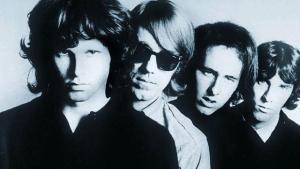 “Robby Krieger of The Doors read One Way Out: The Inside History of the Allman Brothers Band. This is what he said: “I was struck by the similarities between the Doors and Allman Brothers, especially in our origins – the Eureka moment of certainty amidst a jam. Alan lets the people who were actually there tell the story and I couldn’t put it down. Great read!
“Robby Krieger of The Doors read One Way Out: The Inside History of the Allman Brothers Band. This is what he said: “I was struck by the similarities between the Doors and Allman Brothers, especially in our origins – the Eureka moment of certainty amidst a jam. Alan lets the people who were actually there tell the story and I couldn’t put it down. Great read!
November 11, 2013
John Fogerty interview in today’s WSJ
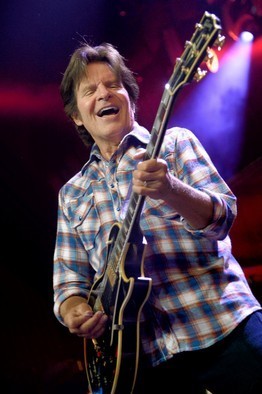 I interviewed John Fogerty for the Wall Street Journal. He discussed speaking with the dead, performing CCR tunes again, playing with his son Shane and three upcoming shows at my favorite venue in the world, New York’s Beacon Theatre.
I interviewed John Fogerty for the Wall Street Journal. He discussed speaking with the dead, performing CCR tunes again, playing with his son Shane and three upcoming shows at my favorite venue in the world, New York’s Beacon Theatre.
We had a great conversation, with a lot of interesting stuff discussed that could not make this story. I will be presenting it in full down the road…
// ]]>
Amazon.com Widgets
November 8, 2013
George Lange, photographer and philosopher
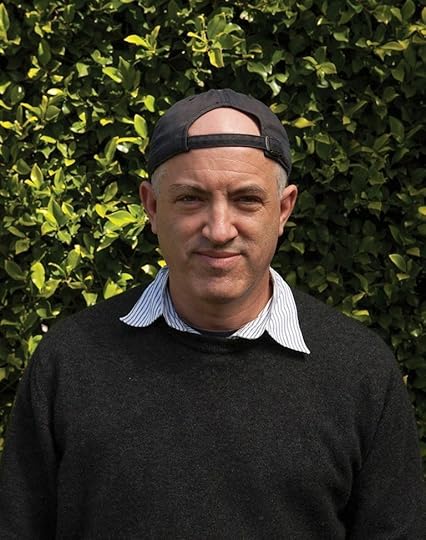 I interviewed my old neighbor George Lange for the WSJ about his new book, The Unforgettable Photograph: 228 Ideas, Tips, and Secrets for Taking the Best Pictures of Your Life. George is a brilliant photographer and a deep, creative thinker. I wanted to formally interview him, because I’ve always enjoyed talking to him so much. Have a look at a recent Ted talk he gave in Boulder, where he now lives, to understand. My interview with him should be up next week on the Speakeasy blog and I will post.
I interviewed my old neighbor George Lange for the WSJ about his new book, The Unforgettable Photograph: 228 Ideas, Tips, and Secrets for Taking the Best Pictures of Your Life. George is a brilliant photographer and a deep, creative thinker. I wanted to formally interview him, because I’ve always enjoyed talking to him so much. Have a look at a recent Ted talk he gave in Boulder, where he now lives, to understand. My interview with him should be up next week on the Speakeasy blog and I will post.
October 29, 2013
Lou Reed loved the blues. A personal remembrance
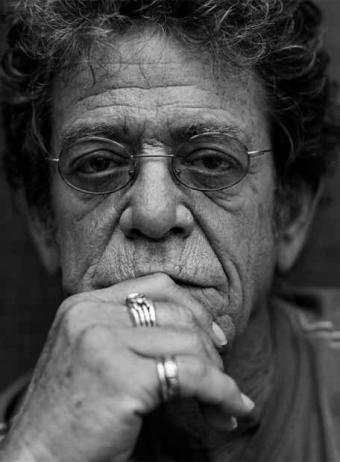 In 1989 I was working as an editor at the Hudson Reporter, a chain of small weekly newspapers based in Hoboken. I was also starting to freelance music writing as much as possible, already writing for Tower Pulse! And looking for more, more, more. Somehow or other, I hooked up with BAM, the Bay Area music publication which was looking for a New York correspondent, a gig which led to some great stories, and when editor Keith Moerer moved over to Sam Goody to found Request, it led to even more great work, including a 1990 interview with Eric Clapton that played a big role in eventually getting hired at Guitar World.
In 1989 I was working as an editor at the Hudson Reporter, a chain of small weekly newspapers based in Hoboken. I was also starting to freelance music writing as much as possible, already writing for Tower Pulse! And looking for more, more, more. Somehow or other, I hooked up with BAM, the Bay Area music publication which was looking for a New York correspondent, a gig which led to some great stories, and when editor Keith Moerer moved over to Sam Goody to found Request, it led to even more great work, including a 1990 interview with Eric Clapton that played a big role in eventually getting hired at Guitar World.
The first great payoff was an interview with Lou Reed. Keith asked me if I was up for this, and of course I said yes. New York was just out and being hailed as a return to form for Lou. I got the album and listened to it over and over, compiling my list of questions without ever quite knowing if this interview was really going to happen. I think I only had it for a day or two and was far from prepared when I got a call at work early one afternoon asking if I could interview Lou that evening. Well, of course I can. I ran out of work, with a friend covering for me, and went home to really get serious about my questions, all written out in long form on a yellow legal pad as I listened to the vinyl over and over.
I got in my car, drove through the Lincoln Tunnel and on up to Lou’s apartment on the far west of the Upper West Side. I was driving my beat-up grey Chevy Cavalier, dubbed the “narc-mobile” by my friends, because I was probably the only non government employee to ever purchase this vehicle. I only had one cassette in the car – an advance copy of Katie Webster’s rollicking blues piano album for Alligator. I was heavily into Katie then, and had already written a giant story on her as a cover story for Sing Out! Magazine. Now bear with me, because this gets interesting. I get up to the Upper West Side, go into the apartment and interview Lou. He was rather cold and unsmiling, but also unrushed, very professional and very thorough in his answers. The perfect example of an interview subject you really need to prepare for. Ask good questions and you will get good answers. So we do the whole interview and it goes well. Sadly, I don’t have a copy in digital or hard format. If anyone does, let me know. (I just checked Ebay and can buy the back issue for about $10.)
The day before Lou had inducted Dion into the Rock and Roll Hall of Fame and, done with my questions, we lapse into a long talk about his love for doo wop and old time blues. He starts talking about the great songwriter Doc Pomus. I say, “Did you know that on the original ‘Sea of Love’ the piano player was a 14-year-old girl?” He did not know this and his mind was blown. He gets very, very interested, starts asking me a lot of questions and I tell him all about Katie and her remarkable life story, which involved her church-going mother not allowing her to play blues, but sneaking out and recording with Louisiana blues legends like Lightnin’ Slim and Lazy Lester for Excello Records – and playing on Phil Philips’ “Sea Of Love.” Lou is fascinated. I tell him all about her, how she played with Otis Redding and had just left his band when he had his crash, and that she has had a recent comeback and is now putting out solo albums. He jumps up for a pen and pad and writes down her name, says he’s going to buy her albums tomorrow.
We bid farewell. I get back in my car and drive away, riding the buzz of the whole thing, and listening to Katie again. Then it strikes me: I should give the tape to Lou. I swing back around and go back to his building, take the tape out, write a note on a piece of paper that says, “Lou, Enjoy. You should have this,” wrap it around the cassette and give it to the doorman, asking him to please give to Mr. Reed. Seemed like the right thing to do.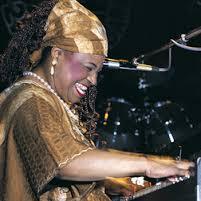 A month or so later, I find out that Lou and Katie were in Germany at the same time and he got a hold of her and invited her to join him on stage, which she did for a couple of songs. I spoke to her manager Ice Cube Slim, and they were both just thrilled that Katie had gotten such a huge audience. I was very pumped about this.
A month or so later, I find out that Lou and Katie were in Germany at the same time and he got a hold of her and invited her to join him on stage, which she did for a couple of songs. I spoke to her manager Ice Cube Slim, and they were both just thrilled that Katie had gotten such a huge audience. I was very pumped about this.
I pitched a story on Katie to Keith at Request and he wasn’t interested. He loved her, but she seemed too obscure for more than a record blurb. I said that I thought I could get a quote from Lou about her. He said, “If you do, I’ll do a feature.” I contacted Lou’s publicist and was on the phone with him days later. The feature ran. All of this gave me a tremendous level of respect and affection for Lou above and beyond his music. Sadly. I never interviewed him for Guitar World, or anyone else, again. Rest in peace, Lou. And Katie, too. Two great artists, seemingly as far apart as you could imagine, but sharing a secret link. Videos below.
// ]]>
Amazon.com Widgets
Lou Reed, “Sweet Jane” 2000
October 28, 2013
Publishers Weekly Reviews One Way Out
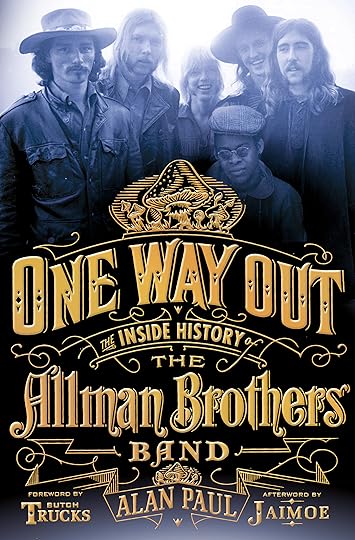 Publishers Weekly weighs in with the second review of One Way Out: The Inside History of the Allman Brothers Band. Obviously, Im pleased that it’s positive, but I also really like the reading and interpretation. Thanks PW.
Publishers Weekly weighs in with the second review of One Way Out: The Inside History of the Allman Brothers Band. Obviously, Im pleased that it’s positive, but I also really like the reading and interpretation. Thanks PW.
An excerpt:
“One Way Out is an entertaining, compulsively readable oral history of the Allman Brothers… Through interviews with every member of the band except Duane Allman and original bassist Berry Oakley, their friends and music associates, as well as in sidebars about various aspects of the band’s history and a ‘highly opinionated”’discography, Paul traces the ups and downs of the band and its music from Duane’s and Gregg’s early bands in Jacksonville, Fla., the earliest days of the Allman Brothers as they developed their signature sound with the original members of the band, Duane’s side projects with Derek and the Dominoes and Muscle Shoals, through the deaths of Duane and Berry in the early ’70s to the various incarnations of the Allman Brothers over the past 20 years.
In many ways, Duane’s ghost haunts the book… According to original drummer Jaimoe Johnson: ‘After Duane died, a lot changed. Everyone wanted to be Duane, but no one knew how to do shit except play music.’”
// ]]>
Amazon.com Widgets
October 25, 2013
The making of “Sultans of Swing”
 In 1997 or ’98, Guitar World did a cover story on the 100 greatest guitar solos of all time. I wrote many of the entries and will repost a bunch of them over the next month or so.
In 1997 or ’98, Guitar World did a cover story on the 100 greatest guitar solos of all time. I wrote many of the entries and will repost a bunch of them over the next month or so.
I’ve been listening to Mark Knopfler’s new album Privateering, which prompts me to post this story on the writing and recording of ”Sultans of Swing” from Dire Straits, the band’s self-titled debut album. I really loved their first three albums and Mark was a big vocal influence for me, without thinking about it too much. I despise the song “Walk of Life” and became unable to listen to them for a long time after that hit.
When I did this interview, I messed up the time change and woke Mr. Knopfler up from a deep slumber. sorry about that sir.
“Sultans of Swing” — Dire Straits (Dire Straits, Warner Bros, 1978)
Guitarist: Mark Knopfler
“‘Sultans of Swing’ was originally written on a National Steel guitar in an open tuning, though I never performed it that way” recalls Mark Knopfler. “I thought it was dull, but as soon as I bought my first Strat in 1977, the whole thing changed, though the lyrics remained the same. It just came alive as soon as I played it on that ‘61 Strat– which remained my main guitar for many years and was basically the only thing I played on the first album — and the new chord changes just presented themselves and fell into place.
“It’s really a good example of how the music you make is shaped by what you play it on, and is a lesson for young players: if you feel that you’re not getting enough out of a song, change the instrument: go from an acoustic to an electric or vice versa, or try an open tuning. Do something to shake it up. As for the actual solo, it was just more or less what I played every night. It’s just a Fender Twin and the Strat, with its three-way selector switch jammed into a middle position that gives it its sound, and I think there were quite a few five-way switches installed as a result of that song.”

// ]]>
Amazon.com Widgets
October 23, 2013
Derek and Susan “It’s So Heavy”
Susan and Derek. Foto by Kirk West.
I’ve been thoroughly enjoying the Tedeschi Trucks Band’s new album Made Up Mind and was happy to come across this acoustic duo take of the album’s “It’s So Heavy” recorded on their bus.
Derek has called this song their tribute to Levon Helm and I can hear that. There is definitely a Band vibe, especially in the intro. It’s always a pleasure to hear them in this kind of stripped down and to watch their interactions.
The photo here is by Kirk West and will be one of almost 100 (!) of his great pictures featured in One Way Out: The Inside History of the Allman Brothers Band. I’m so very excited to have these photos in the book. Kirk was also a superb photo editor and helped me find and secure great images by Twiggs Lyndon, Jim Marshall, Stephen Paley, Danny Clinch, Sidney Smith and others.
Enjoy the music:
October 17, 2013
First One Way Out Review is in – Booklist
Highlights from the starred review in Booklist:
Perhaps no music journalist has written as extensively about the Allman Brothers Band as Paul…and his deep familiarity with the band and its music shows everywhere in this fluid account. Framed as an oral history, the biography includes extensive, insightful comments not only from band members but also from players at all levels of the music business, from loyal roadies to gifted producers (including the late Tom Dowd) to money-minded record company executives…. Augmented by photos and fascinating sidebars, this candid oral history has appeal beyond the Allman Brothers Band’s loyal fan base. — Joanne Wilkinson

BOOKLIST : November 1, 2013 One Way Out: The Inside Story of the Allman Brothers Band. Feb 2014. 464 p. St. Martin’s, hardcover, $29.99. St. Martin’s, e-book, $14.99.
// ]]>
Amazon.com Widgets




